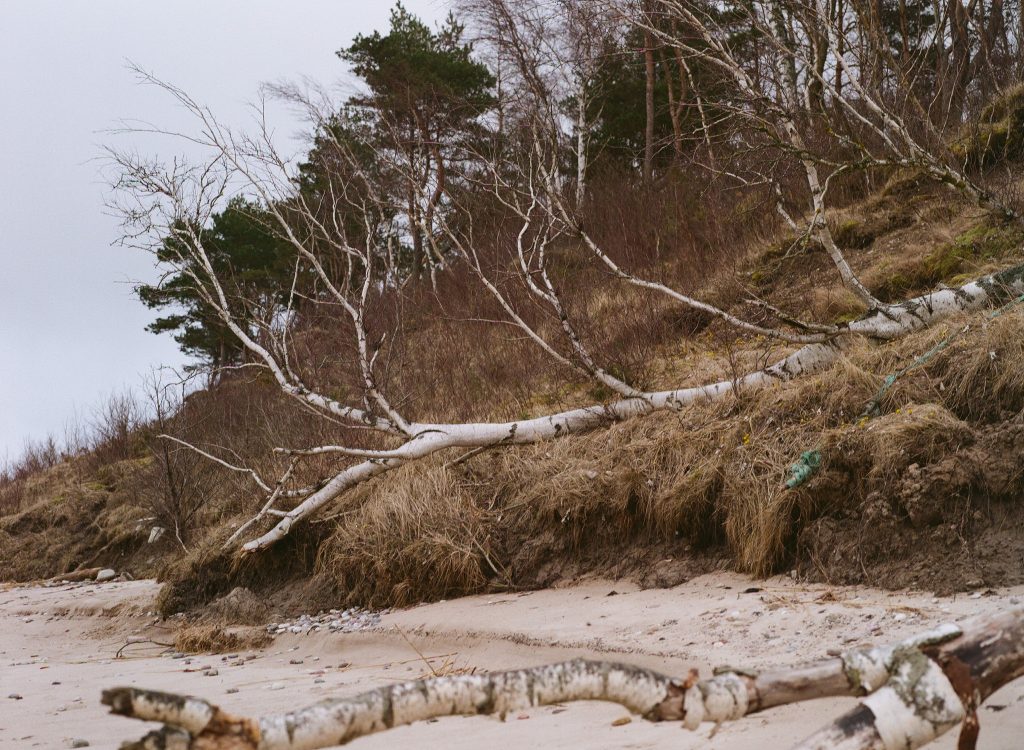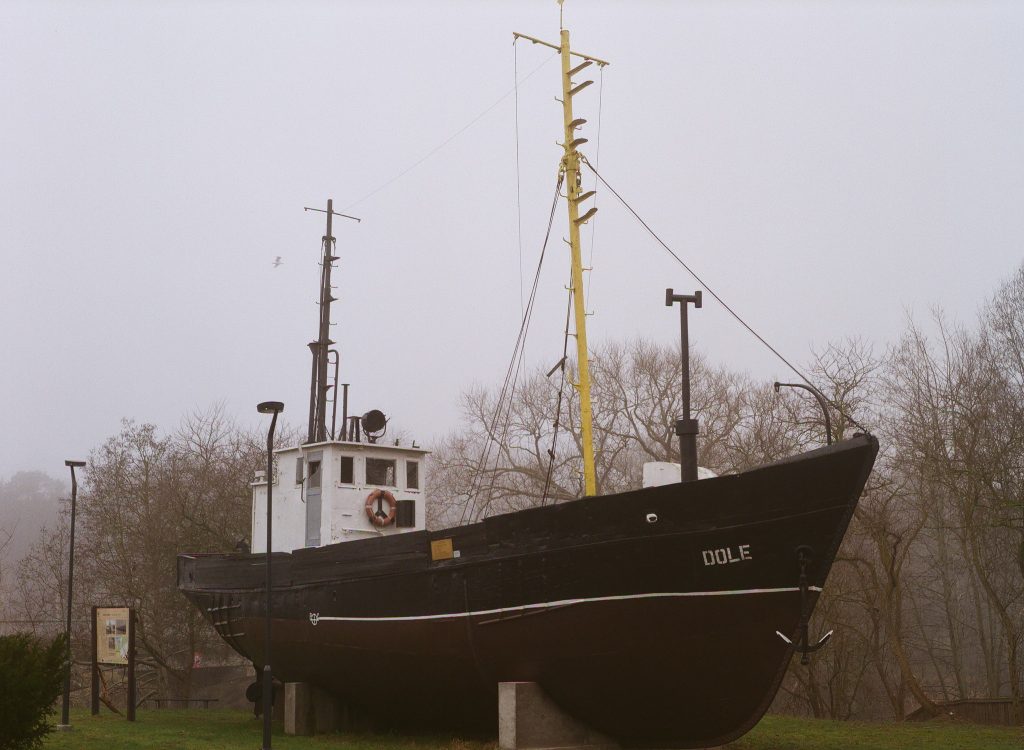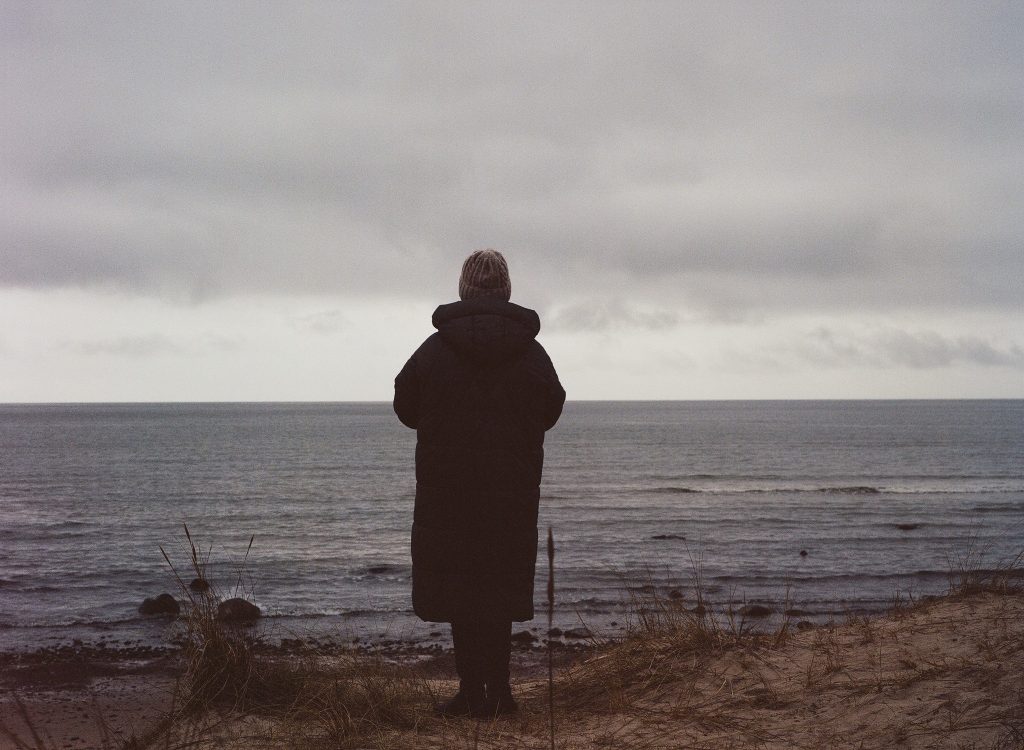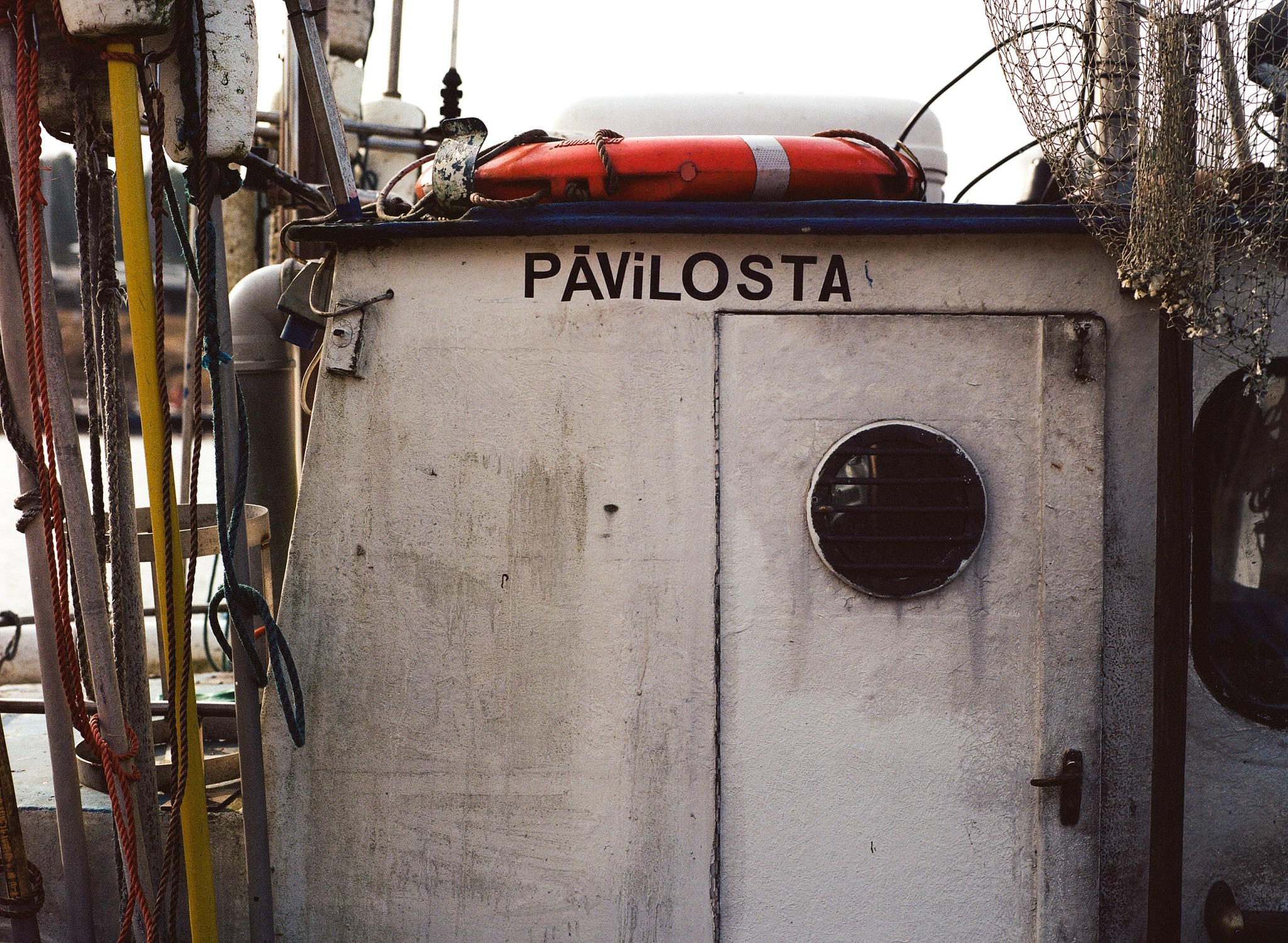Pāvilosta is a small town on the coast of the western Latvian region of Kurzeme, home to a little under a thousand people. Historically a fishing village, in the summer months Pāvilosta is among the country’s most fashionable and popular getaways – beloved by people from the capital Riga and other parts of Latvia. But it was not this bustling and bucolic time of year that Latvian photographer Vika Eksta chose for the subject of her recent exhibition The Dream of the Sea, but the damp and often snowy months when Pāvilosta is abandoned by all but its small permanent population. In this article, Helmuts Caune writes about Eksta’s pictures and considers how the Baltic Sea took shape, and how those living alongside it have seen it over the centuries.

The fact that the Baltic can be called a sea at all is in a way an accident or a stroke of luck. Just as with the largest lake in the world – the Caspian Sea – it is so called perhaps because the first people to see it were simply unable to grasp its extent. The Baltic Sea does technically count as a sea – in that the navigable straits of the Kattegat and Skagerrak link it with the oceans of the world. (I’ve heard that surfers, kiteboarders and enthusiasts for other similar thrills curse the existence of Scandinavia as a geographical phenomenon, because it interferes with proper Atlantic waves reaching the coast of Kurzeme.)
But that has by no means always been the case. Although the accounts of researchers differ, the majority seem to agree that within the current outlines of the Baltic Sea could be found the so-called Lake Ancylus – a great freshwater sea which formed approximately 7,500–9,500 years ago. It’s thought that, for example, in the region of Ventspils the surface level of Lake Ancylus was approximately 15 metres lower than the current level of the Baltic Sea, but in the south of the Gulf of Riga, 5–6 metres lower.
The next phase gone through by this body of water – and the immediate predecessor of the Baltic Sea – was the Littorina Sea. As the water level rose, freshwater from the Atlantic Ocean flooded in through what is now the Kattegat. This process started to take shape around 7,000 years ago; for perspective, it was around this time that in Asia Minor the first human creation appeared that could be called a proper city. The Baltic Sea is young – significantly younger than technological activity by humanity and the development of civilisation elsewhere in the world. Putting a hand into the little waves along the seashore, a short sentence from the Swedish poet Tomas Tranströmer’s only prose work Memories Look at Me comes to mind: “we can touch history”.
The Littorina Sea – its name taken from a snail, Littorina Littorea, that lived in it – ceased to exist around 4,400–2,500 years ago, depending on which researchers we believe. By then, humans had already started to settle in the area of the sea, building their settlements on the coast and sustaining themselves on what could be got from the sea.

The Baltic Sea we know today can be dated to around 4,500 years ago. This was a time when, compared to its predecessor, the salinity of the sea had sharply dropped, the climate become cooler, the amount of precipitation increased, and the depth and width of the body of water considerably decreased. Around this time, the Baltic coastline – including the Kurzeme coast – had acquired its familiar landscape, with lagoons and sand dunes, and pines, and sandy-pebbly beaches, and cliffs.
The people of those landscapes, both from Tranströmer’s coast and from our own, have been looking at the surface of this sea for thousands of years. With fear, longing, dreams or reflection – about that we can only guess. And some of these people’s descendants still live right there – whether on a day-to-day basis, or only now and then – in Pāvilosta, in the small town that grew out of the settlements of those long-forgotten generations.
The PAiR artist residency, founded by the VV Foundation for the support of contemporary art, is located at Ernesta Šneidera Square 11 in Pāvilosta. Each year, visual artists, writers, researchers, curators, and representatives from other cultural fields periodically reside and work there. The residency provides a stimulating environment free of distractions and conducive to cross-disciplinary dialogue, allowing artists to develop individual and collaborative projects.
Photographer and video and performance artist Vika Eksta (1987) spent two separate periods at the residency: in March 2023 and March 2024. Unlike others who often choose to work on themes or subjects geographically more or less remote during their residency at PAiR, Eksta selected the location itself – Pāvilosta, its people, urban environment, and the conditions dictated by its nature – as the subject for her artistic exploration.
The sea as an element, natural phenomenon, unavoidable presence, symbol and enchantment is a significant motif in the exhibition forming a connection between visual and auditory forms: static frames interact with dynamic sound compositions, inspired by the sea. Fascination with the sea has historically and in modern times been politically, economically, and romantically determined, and this fascination continues to manifest in Pāvilosta. The city, first mentioned in historical records dating back to 1253, may not hold economic significance as a coastal trading hub today. However, the romanticised or idealised aspect of the sea finds profound expression in Pāvilosta. During the summer season, it becomes the ultimate destination for many inland Latvian residents, each year transforming the place beyond recognition for a few months.
But Pāvilosta exists year-round, and Eksta’s camera has captured it precisely during the “off-season” – a time when hotels and guesthouses are empty, cafes are mostly closed, and locals, with or without dogs, stroll along the beach instead of surfers and vacationers.
In Eksta’s exhaustive collection of photographs, three core motifs stand out. First, the sea, the waves, and the coastline in all its harshness and relentlessness, the dunes and pine trees of the Kurzeme coast. Second, the urban environment of Pāvilosta – the beach, the port, and the symmetrical streets where historical and modern, familiar and foreign meet in architecture. And third, portraits of people, close-ups of faces, and lasting impressions: locals and visitors who have agreed to step before Eksta’s camera lens, representing a dimension of coastal life that is more real than a dream.
Vika Eksta’s exhibition The Dream of the Sea was open to the public at the PAiR residency in Pāvilosta, Ernesta Šneidera Square 11, from 29 June to 11 August 2024. It showcased Vika Eksta’s photography and video works, accompanied by compositions from organist Una Cintiņa’s album Songs of the Sea and a song by Pāvilosta local Haralds Lukšēvičs. The exhibition was curated by philosopher Helmuts Caune and supported by the VV Foundation.
The PAiR artist residency, founded by the VV Foundation for the support of contemporary art, is located at Ernesta Šneidera Square 11 in Pāvilosta. Each year, visual artists, writers, researchers, curators, and representatives from other cultural fields periodically reside and work there. The residency provides a stimulating environment free of distractions and conducive to cross-disciplinary dialogue, allowing artists to develop individual and collaborative projects.

All images credit – Vika Eksta
© Deep Baltic 2025. All rights reserved.
Like what Deep Baltic does? Please consider making a monthly donation – help support our writers and in-depth coverage of Estonia, Latvia and Lithuania. Find out more at our Patreon page.










